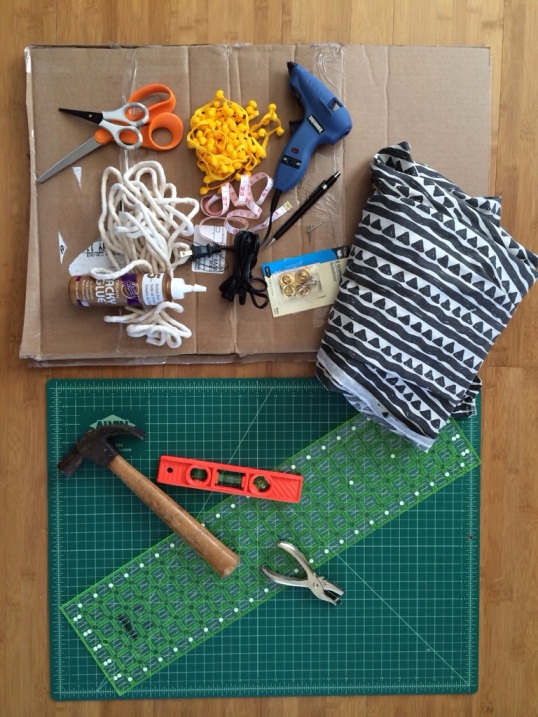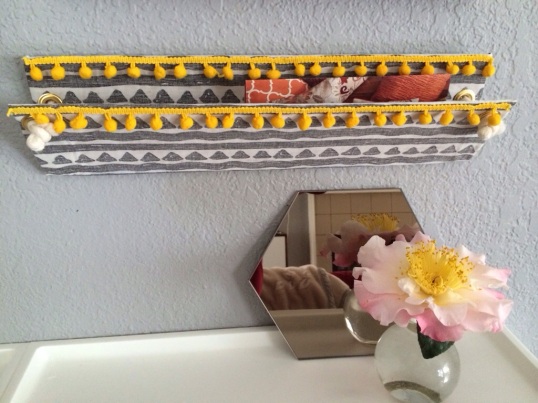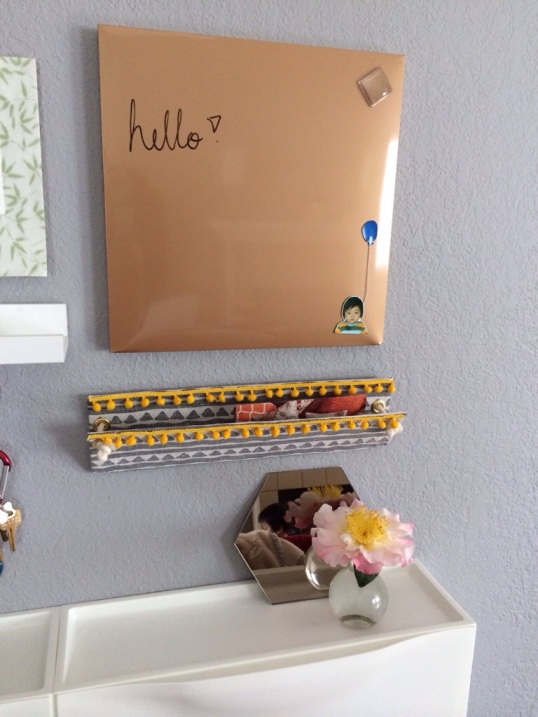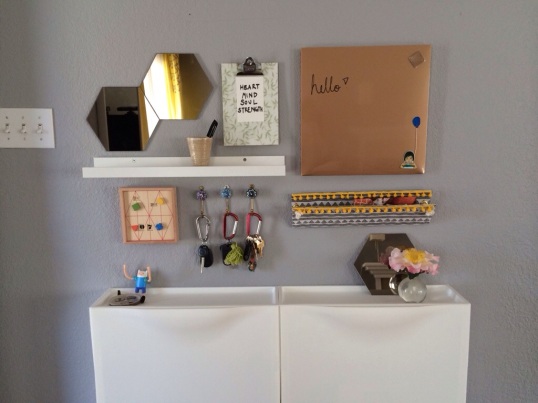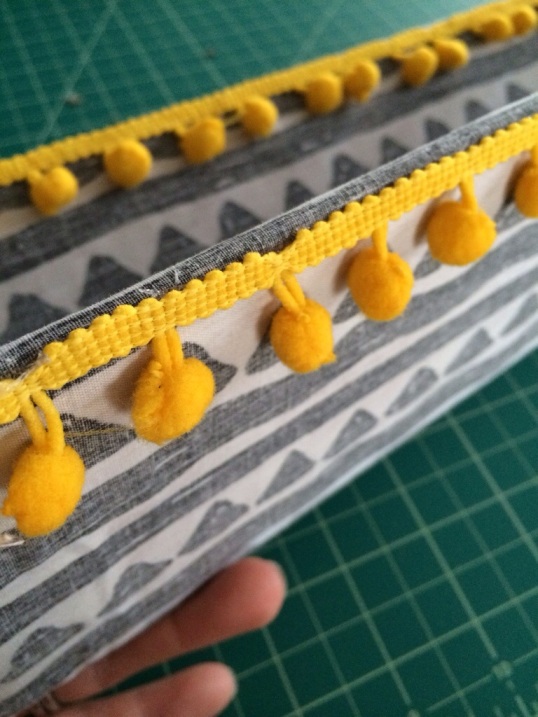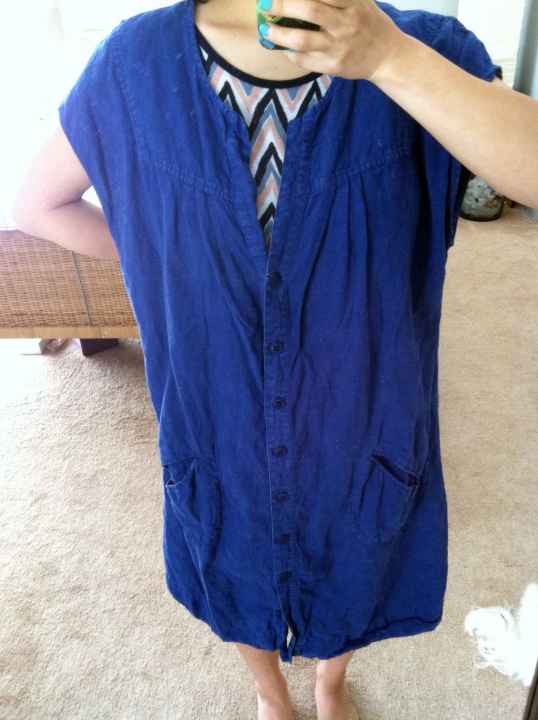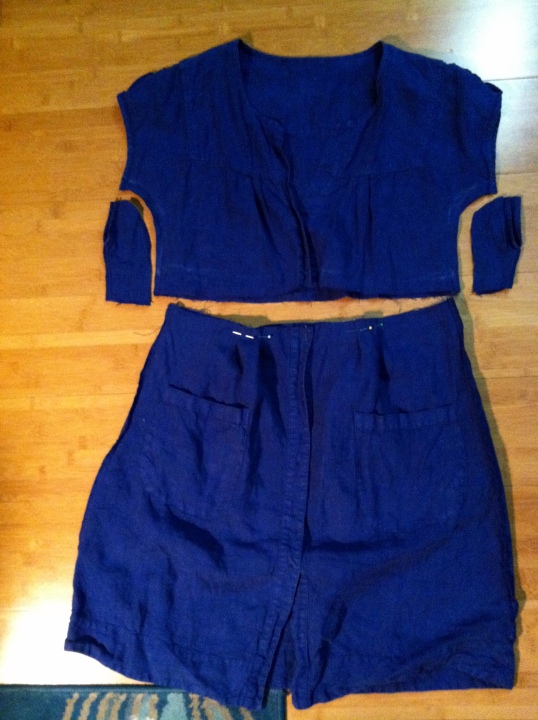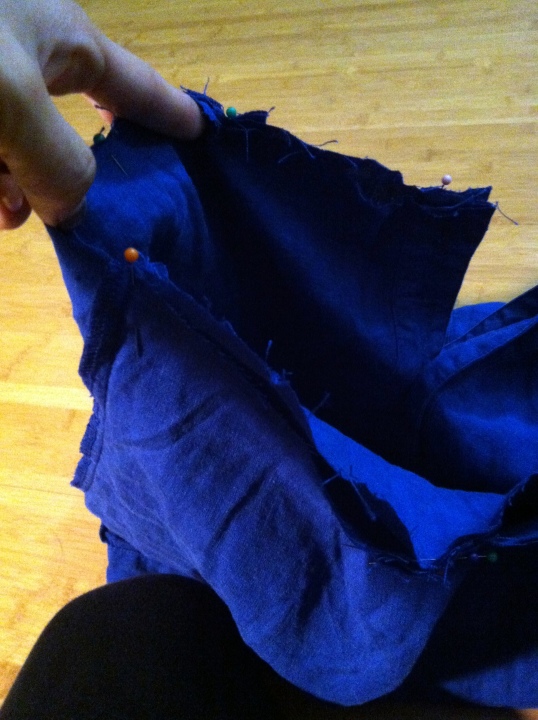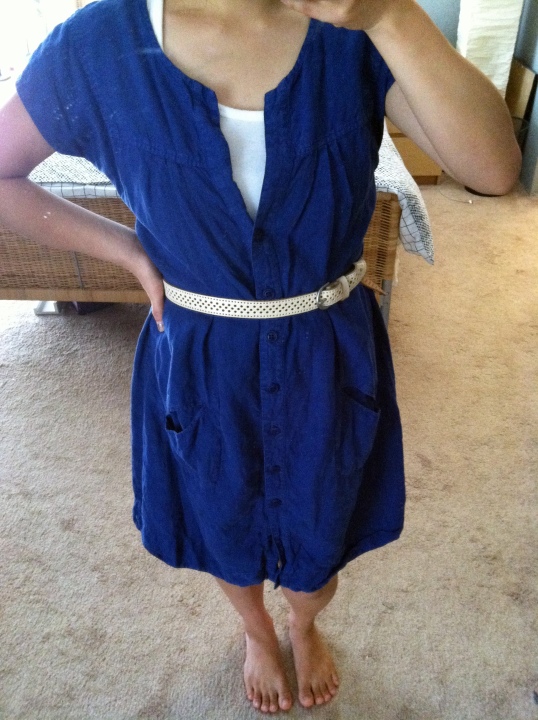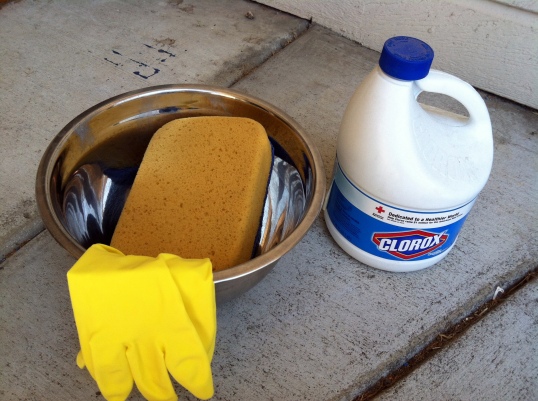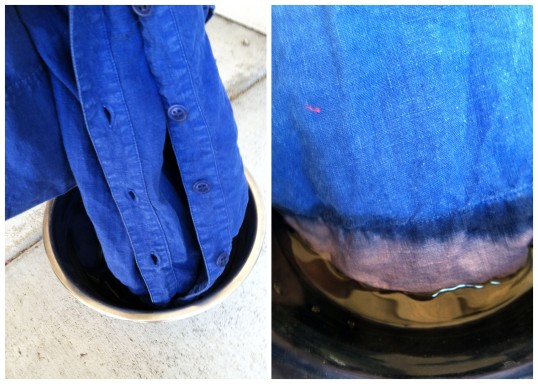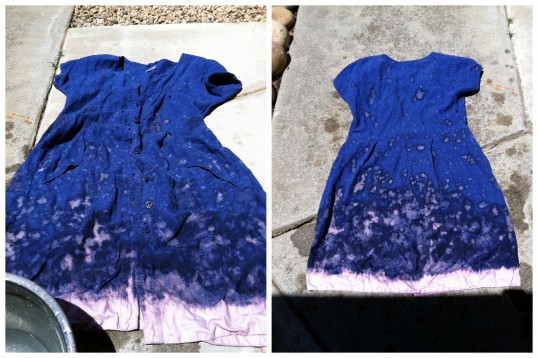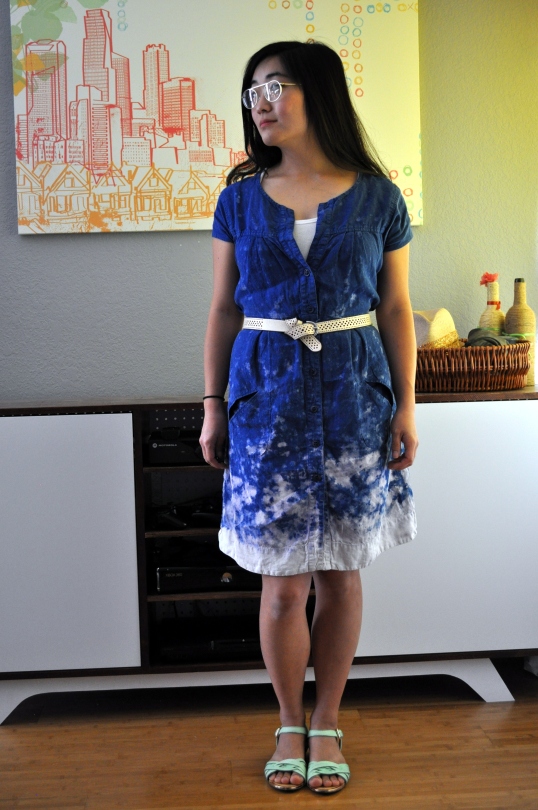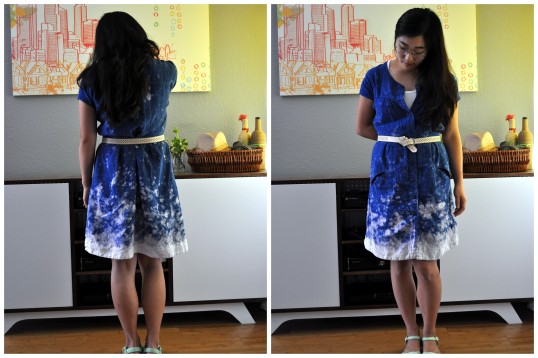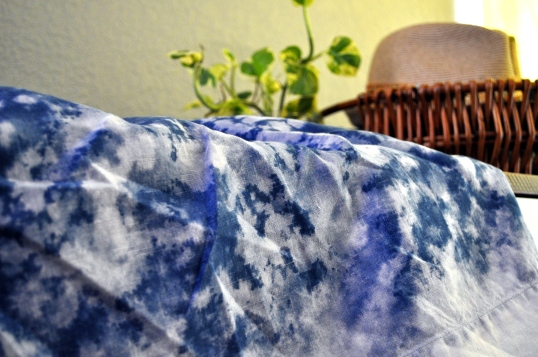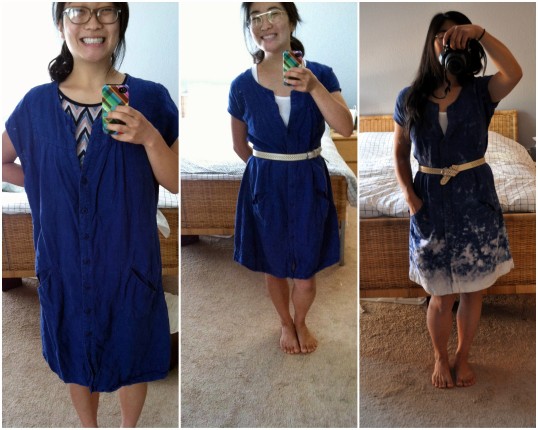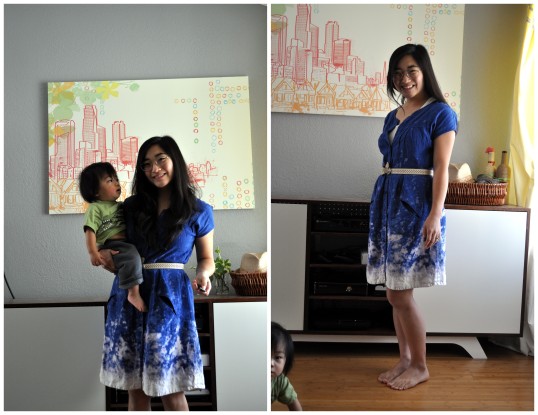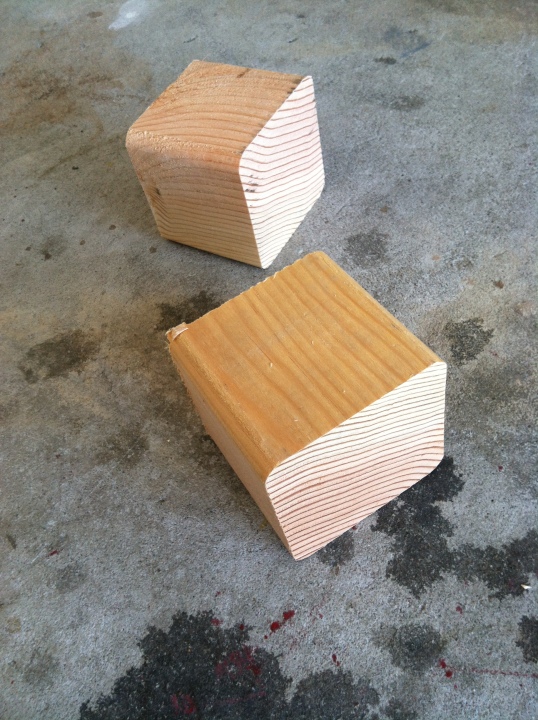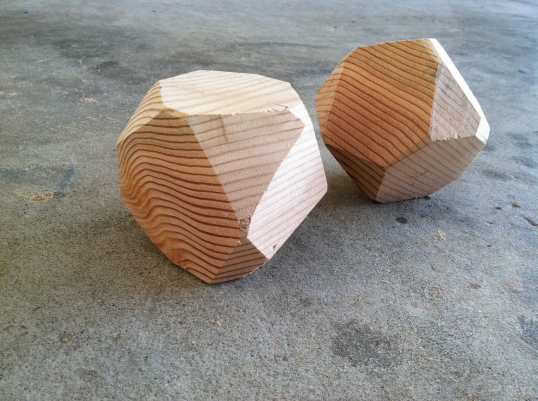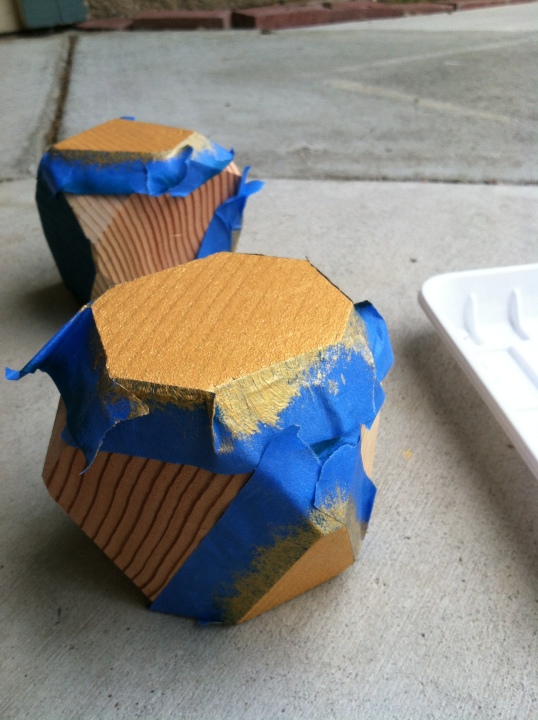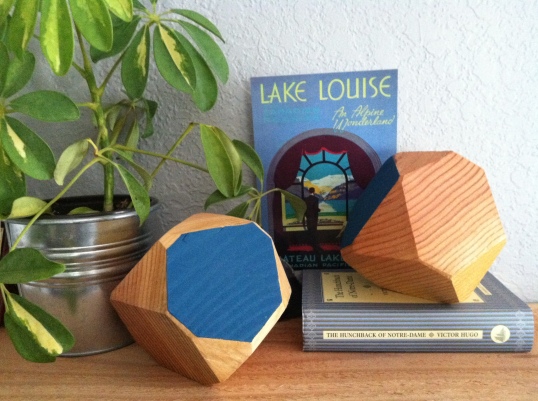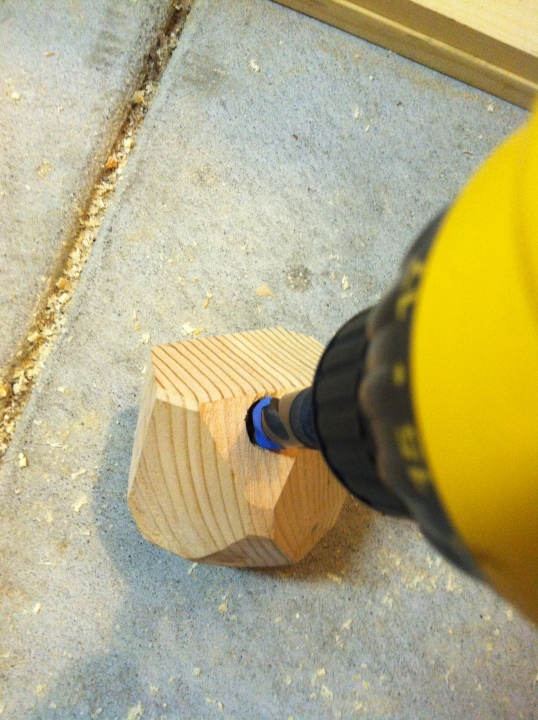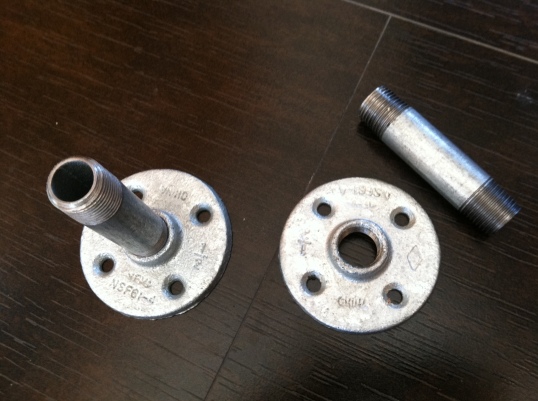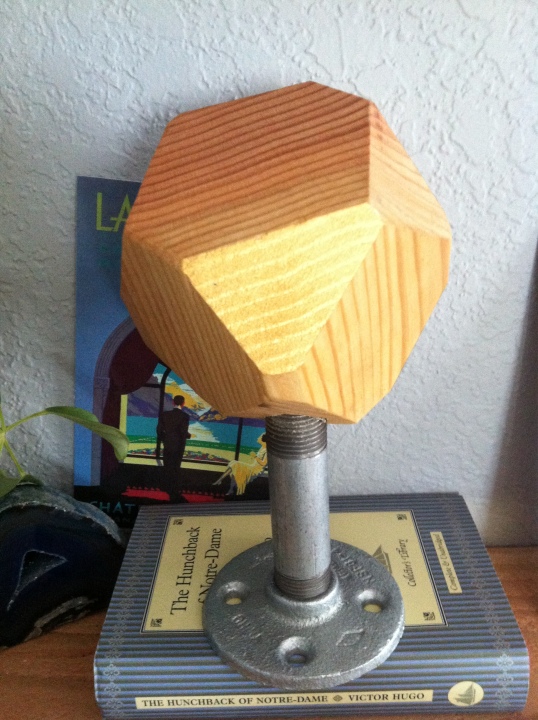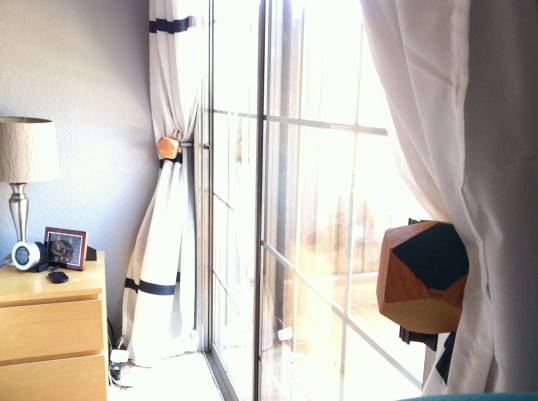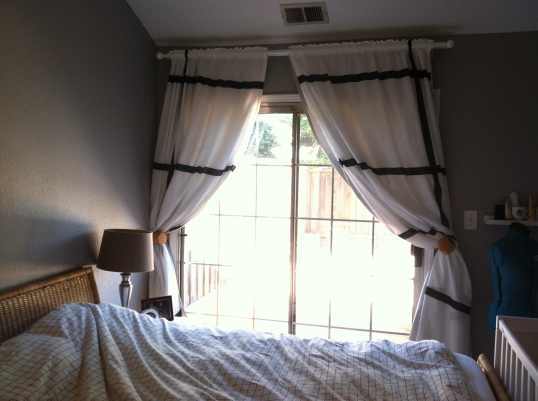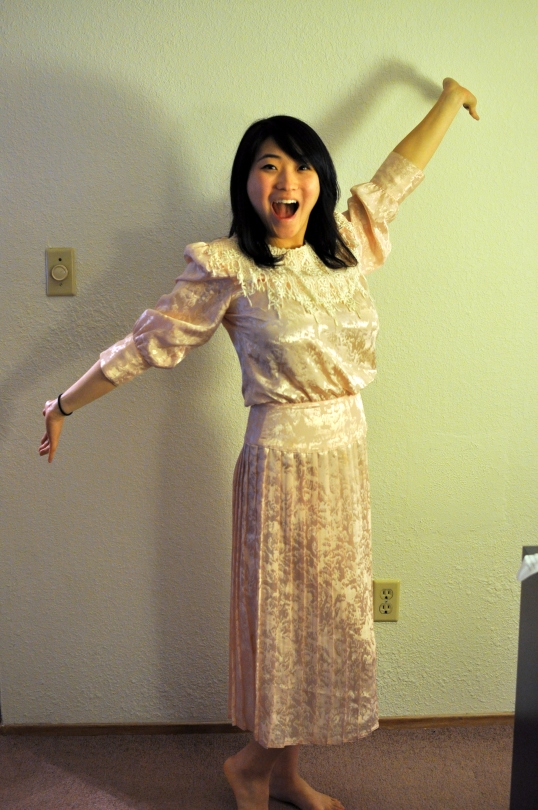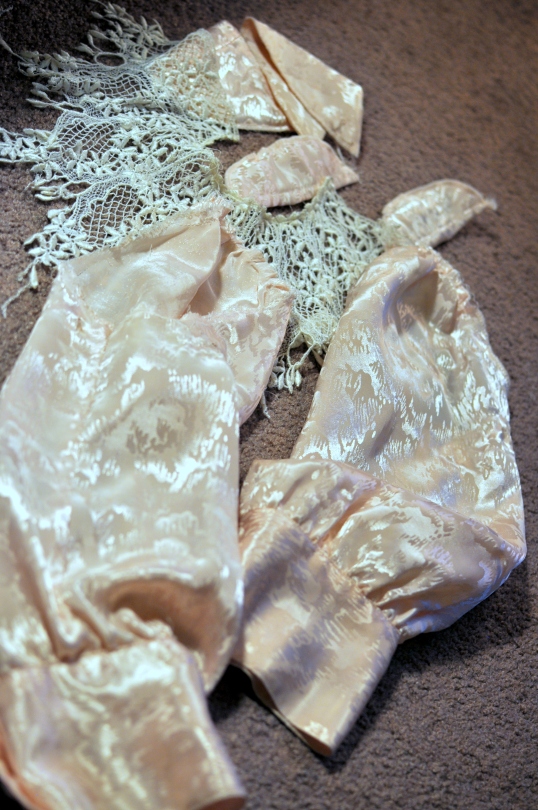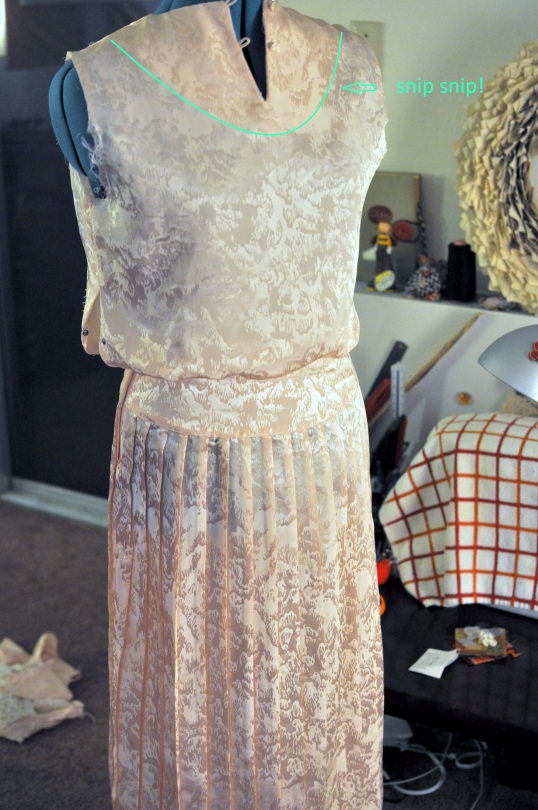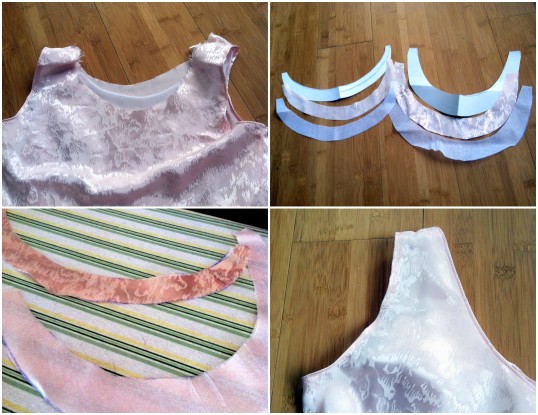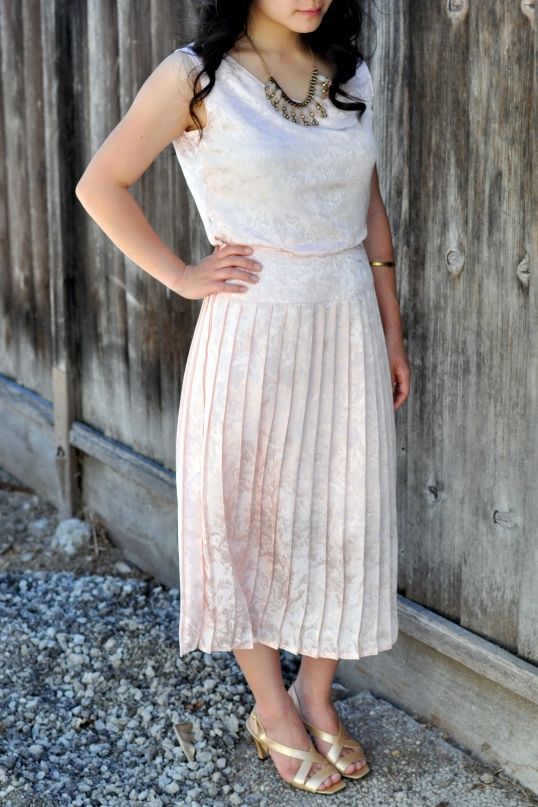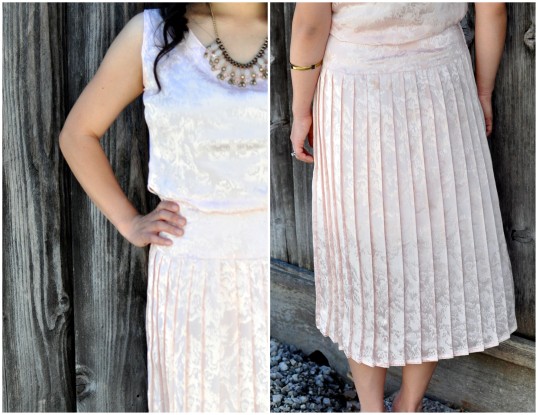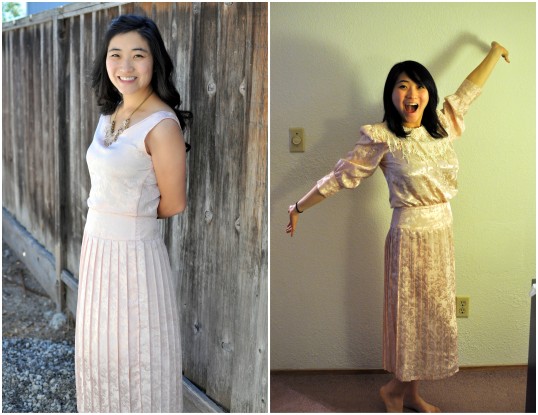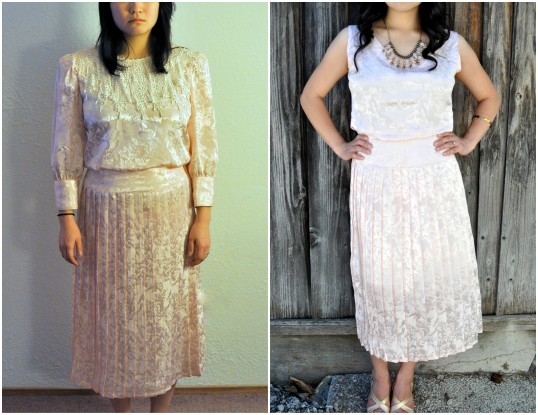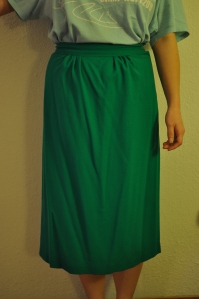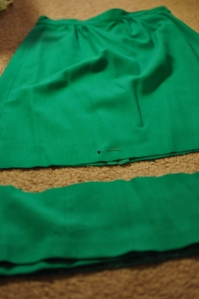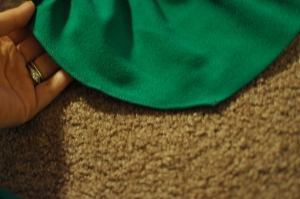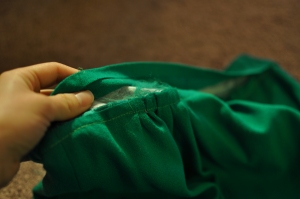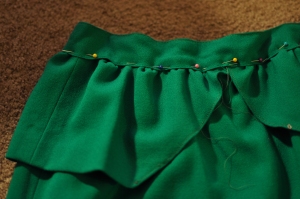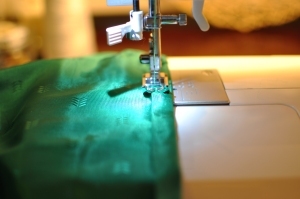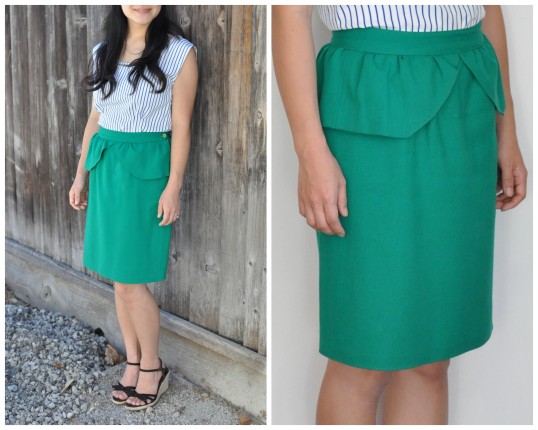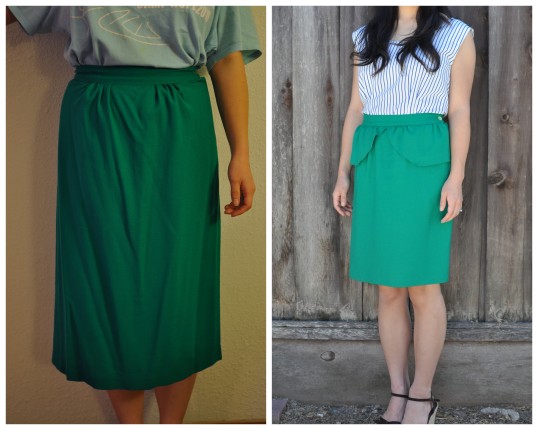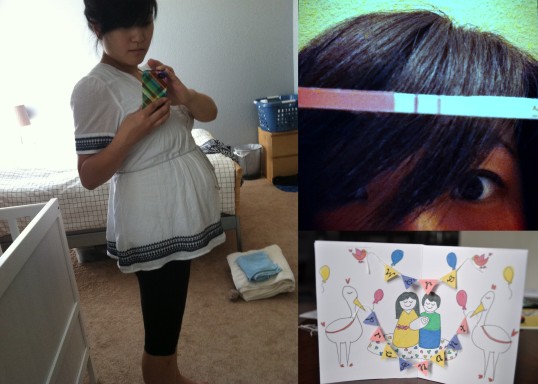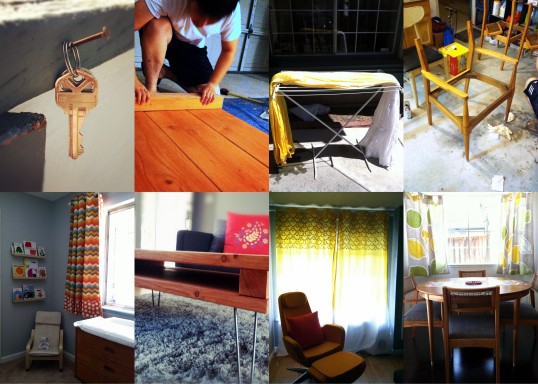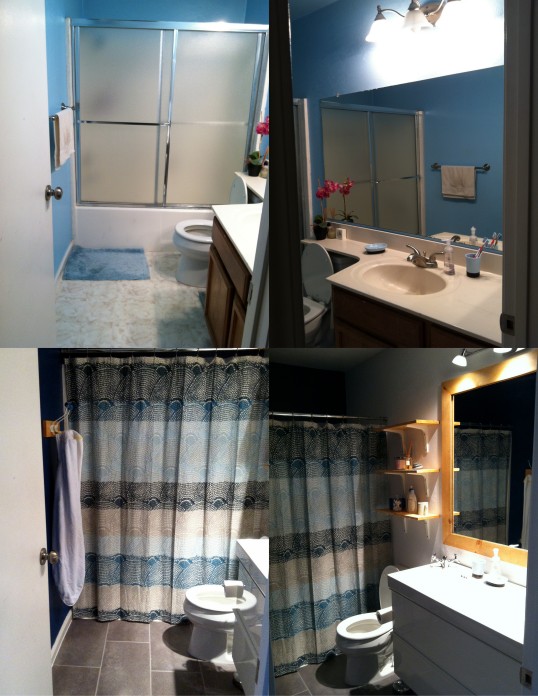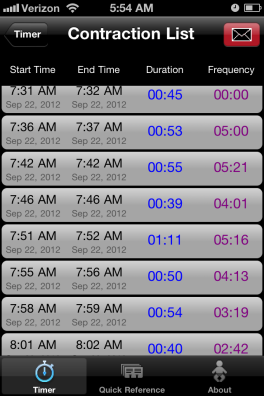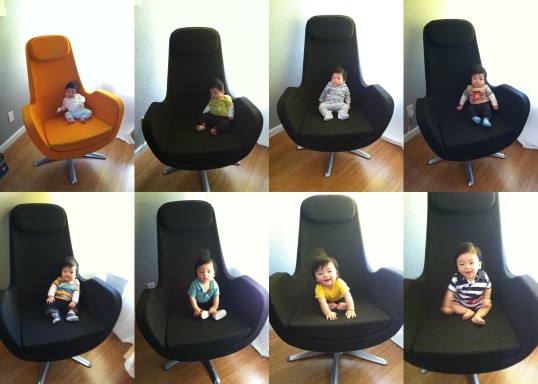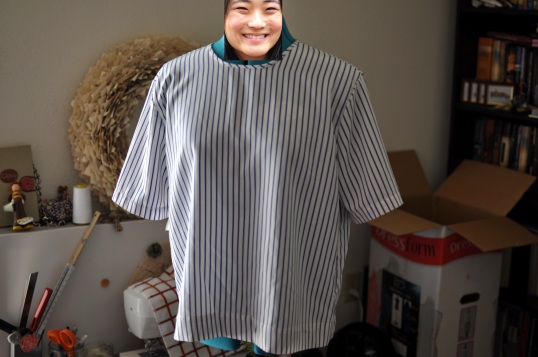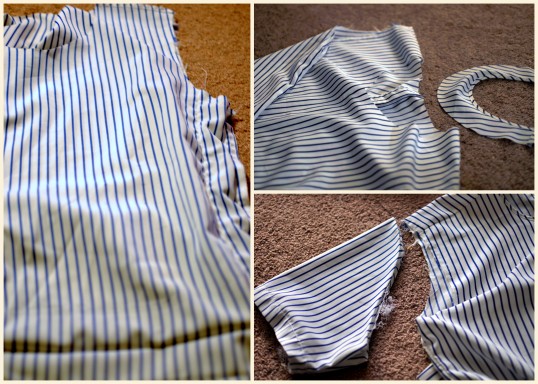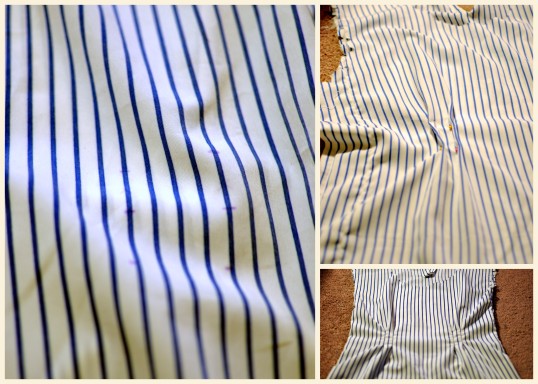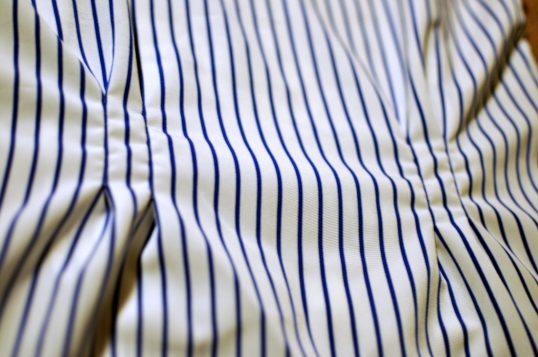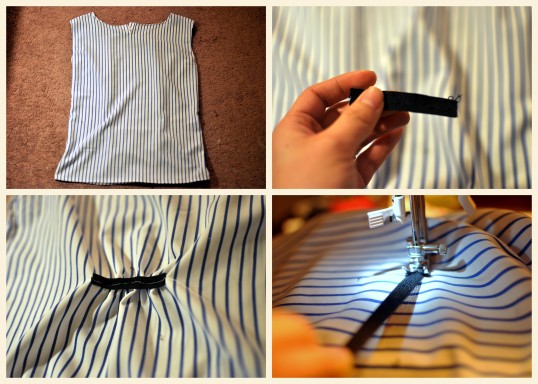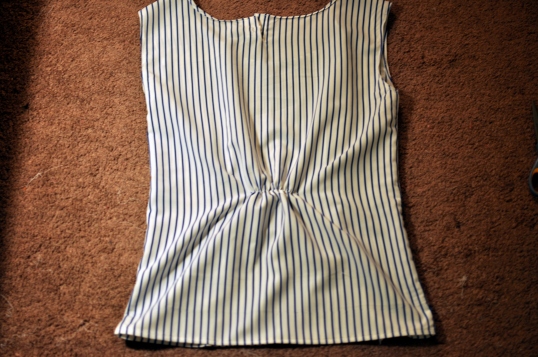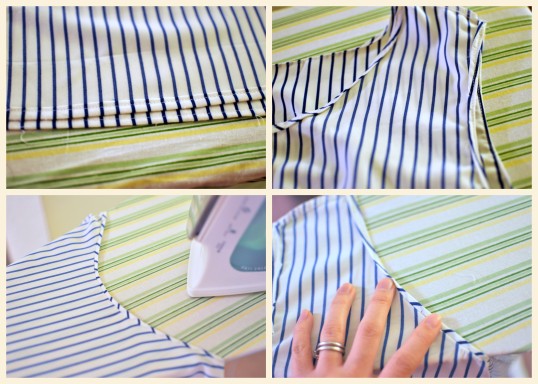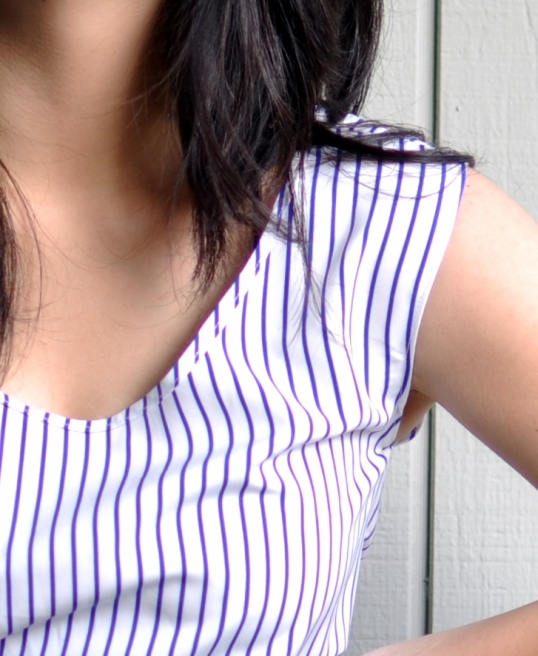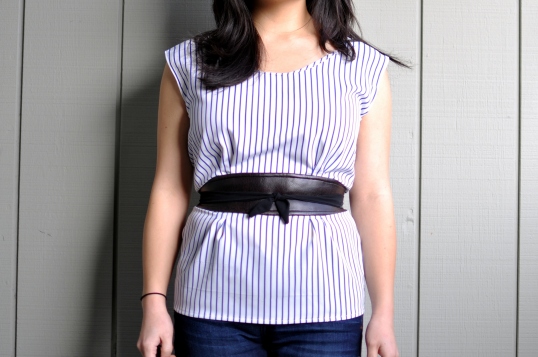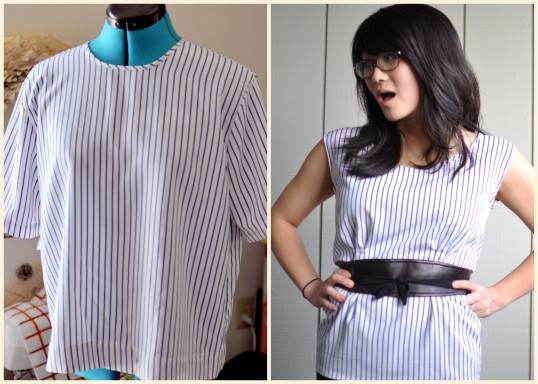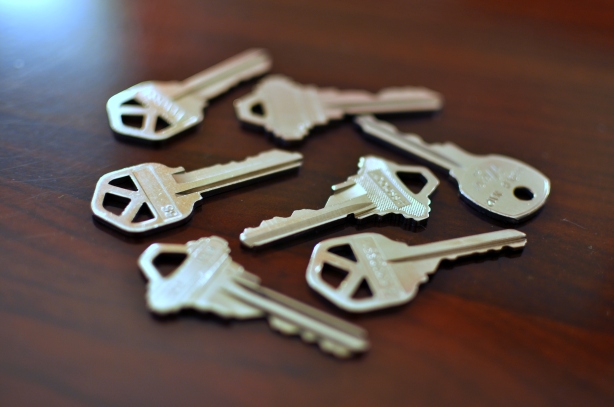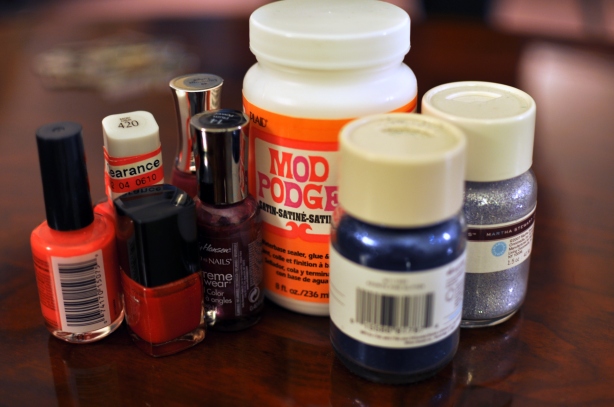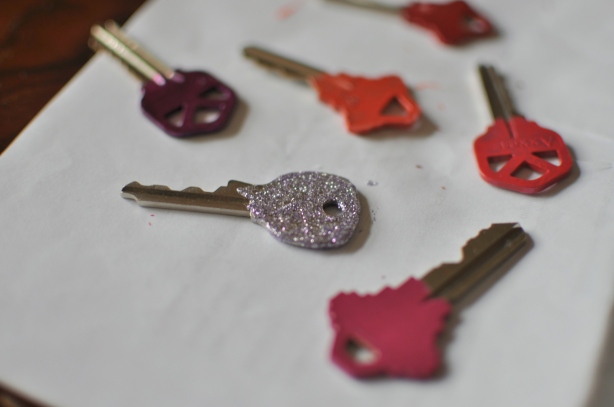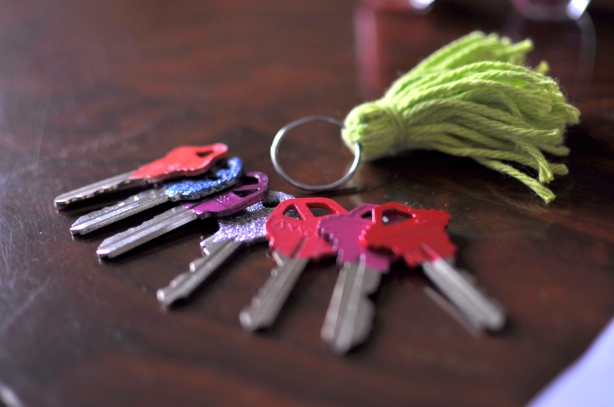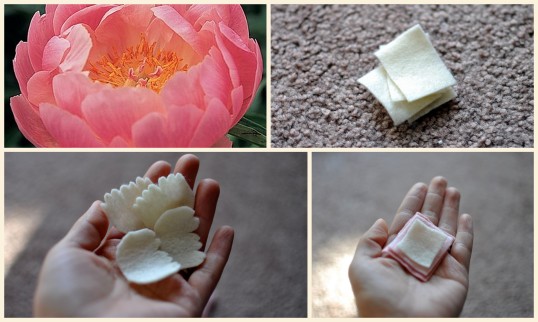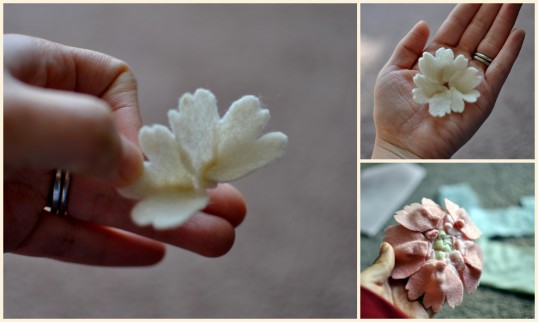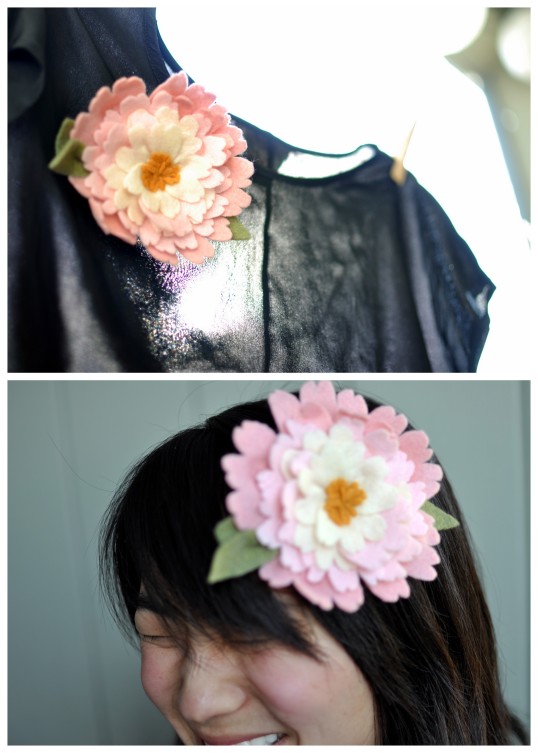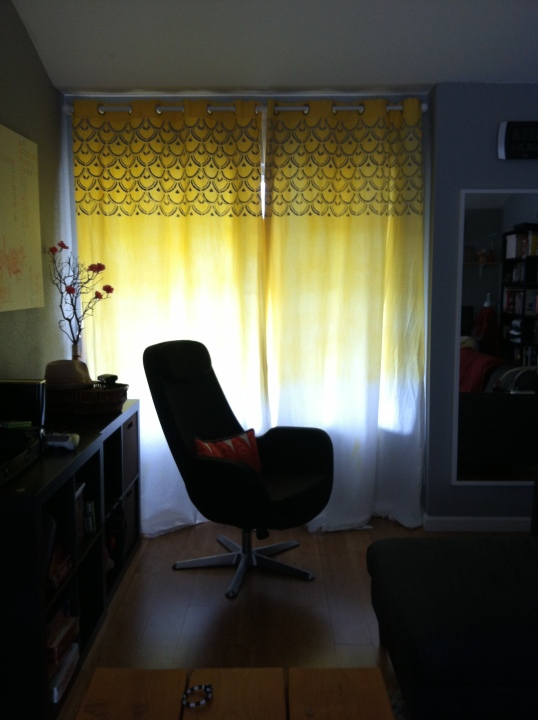
The very first thing we did when we moved into our house was paint all the walls. Every room was painted a different color (bright blue bedroom, pink bathroom, peach kitchen, green master!) so to unify everything and establish a neutral palette I chose to sweep everything in the neutral paint color du jour – grey. Convinced there would be pops of color elsewhere, we proceeded to get the rest of the big furniture in the living room – a sectional sofa, a large area rug, and book cases/expedit shelving units. What colors did those end up being? Dark grey, grey, and black, respectively. Even my sofa “accent” pillows ended up being grey. I was starting to feel very drab indeed.
I searched and searched for some bright cheery yellow curtains but I learned quickly that I’m painfully particular – I wanted a print, but I didn’t want it all over. I wanted ombre, but I thought it too plain by itself. I wanted a bright, loud color, but didn’t want it to be solid. And underlying it all was the painful squeeze of now paying a mortgage through our noses.
Amidst my woe, I serendipitously checked the “As-is” section at IKEA and found a pair of these for $5!(!!!!!) After reading a bajillion tutorials on how to dip dye fabric AND how to paint a pattern onto fabric (like this one), I just jumped in and tried it myself. For the most part, I’m pleased with the end product, but there are DEFINITELY things I wish I had done differently.
DYEING
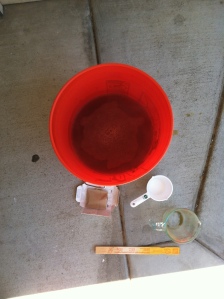
I used 1 entire package of RIT Golden Yellow, and dissolved it with a cup of salt in about 3 gallons of boiling hot water. In retrospect, I wish I had done 2 packages? Or maybe tried mixing it with the tiiiniest hint of orange, just because I wish the yellow were just a tad bit more saturated. I think my curtain fabric (a sort of canvas-y material) was too thick to take on the dye to the degree I wanted. Oh well!
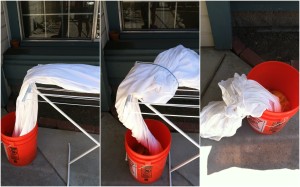
I then lowered the ends of my curtains into the bucket until they skimmed the bottom. I let the ends steep for about 15 minutes, and then lowered another foot into the bucket. I kind of twist scrunched the fabric to make it fit more efficiently in the water and make sure the dye line would be level horizontally across the fabric. I repeated this process of lowering a foot of fabric in and letting it soak for 15 minutes about 4 times. For the last “wash” where the yellow is the lightest and transitions into the white, I just dipped it quickly a couple times instead of letting it soak.
When I pulled it out, the end at the bottom of the bucket was the darkest shade of yellow since it had sat in the dye for more than hour, while the part right next to the white was the very lightest since it was just dipped really quickly. I carefully hung the curtains across my fence (making sure the color was at the bottom!) and ran cold water with the hose from the top (white) to the bottom (yellow) until the water ran clear. I let it air dry, and then threw it in my dryer to set it!
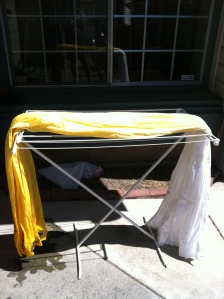
What did I do during those 15 minute intervals?
PAINTING
With some left over wall paint, a homemade stencil, a sponge, newspaper, spray adhesive, scotch tape, and a couple paper plates on hand, I started figuring out how to paint the pattern onto my curtains.
I sketched out a few patterns that I thought I might like, and once I decided on one, I drew it out on some stencil material and made my cuts with an Xacto-knife. I sprayed the back with spray adhesive (it gives the back of the stencil some tackiness), and also stuck four pieces of scotch tape on each side to help secure it and keep it in place.
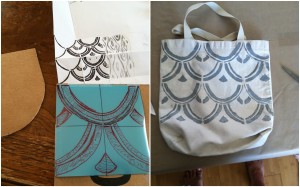
After practicing on a tote to get the feel of things, I laid newspaper under the curtain fabric and got to work. The process was to position the stencil, stick down the scotch tape, load up my sponge and blot off excess on a paper plate, apply onto the stencil evenly, carefully peel off and wipe off the excess paint on a paper plate. Rinse and repeat.
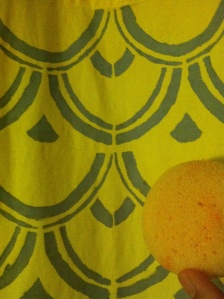
I’m not going to lie, the stenciling and painting was a PAIN and it took forever (forever = maybe 4 hours?). There are a lot of things I would do differently if I were to do this over.
WHAT I WOULD DO DIFFERENTLY
This was a roll of “make your own stencil” material from Martha Stewart that I got from Michaels. I would NOT (!!!!) recommend using this!!! It was rolled so tightly, that once I tried to unfurl it to use for myself, the dumb thing would NOT lie flat, even after rolling it as tight as I could the opposite way. If I were to do this again, I would definitely use some sort of mat or waterproof paper (I’ve heard contact paper works)
The tutorial I mainly followed (the one I linked to earlier) said to use a foam roller. I tried that on my tote and it stunk. So I tried a foam brush, but that was really bad too! I finally settled on the round dabby sponge that’s in my picture, which I think was ideal. Messy on the fingers, but the best of the bunch.
I would draw grid lines for myself to help guide the placement of my stencil. I considered this but didn’t do it because I thought it would easy to just match up the edges of the pattern to keep myself straight. NOPE. My pattern started getting all wonky near the end of the second row, with the edges not matching the way they were supposed to, and by the end, I had to fill in the spots where the ends weren’t matching up.
I would also make my stencil WAY bigger, like at least four times bigger and just have the pattern repeating within my stencil. The whole process got tedious really fast, so making a bigger stencil would have saved some pain.
Regardless of how things could have been done better, I still get to see this every day
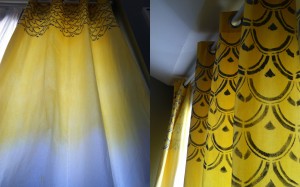 and it does make me happy 🙂
and it does make me happy 🙂
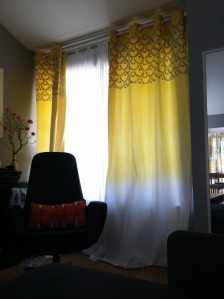 these curtains cost about $7! and a million bucks of my TIME.
these curtains cost about $7! and a million bucks of my TIME.
